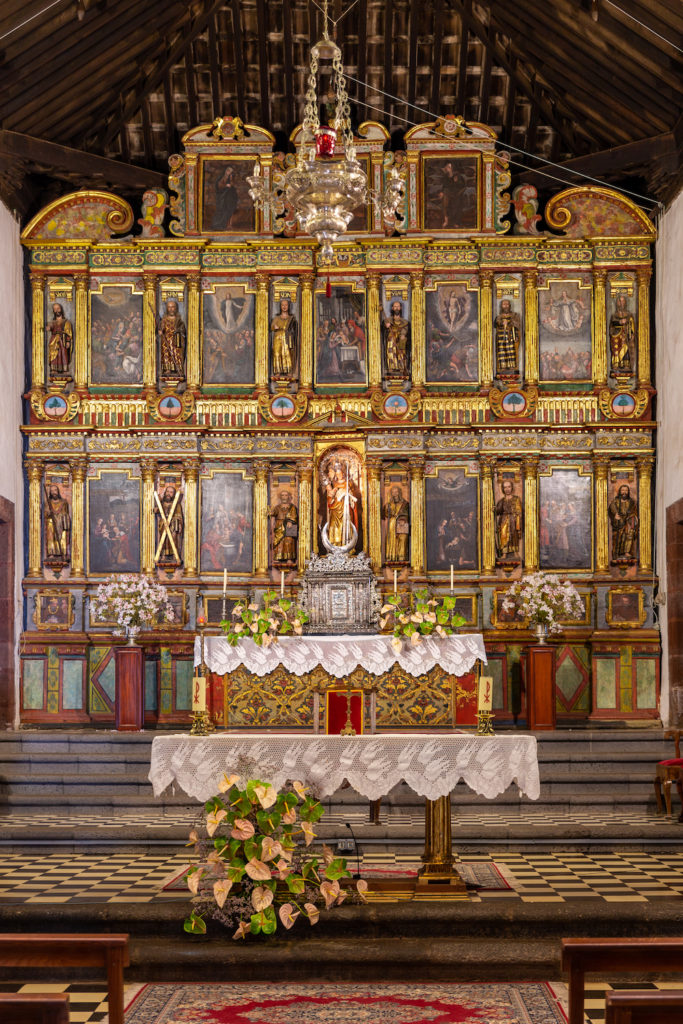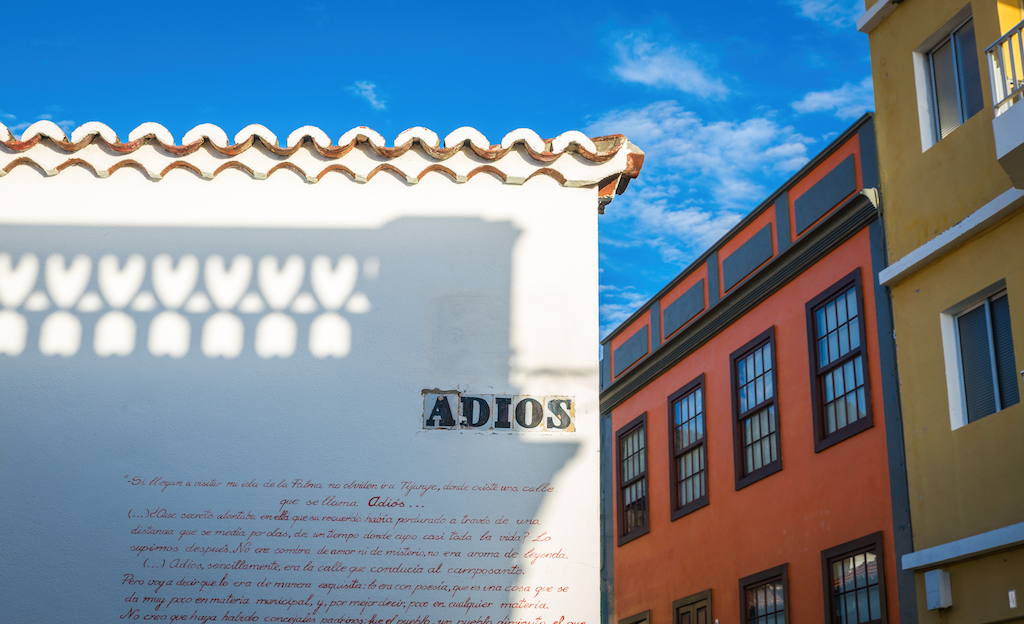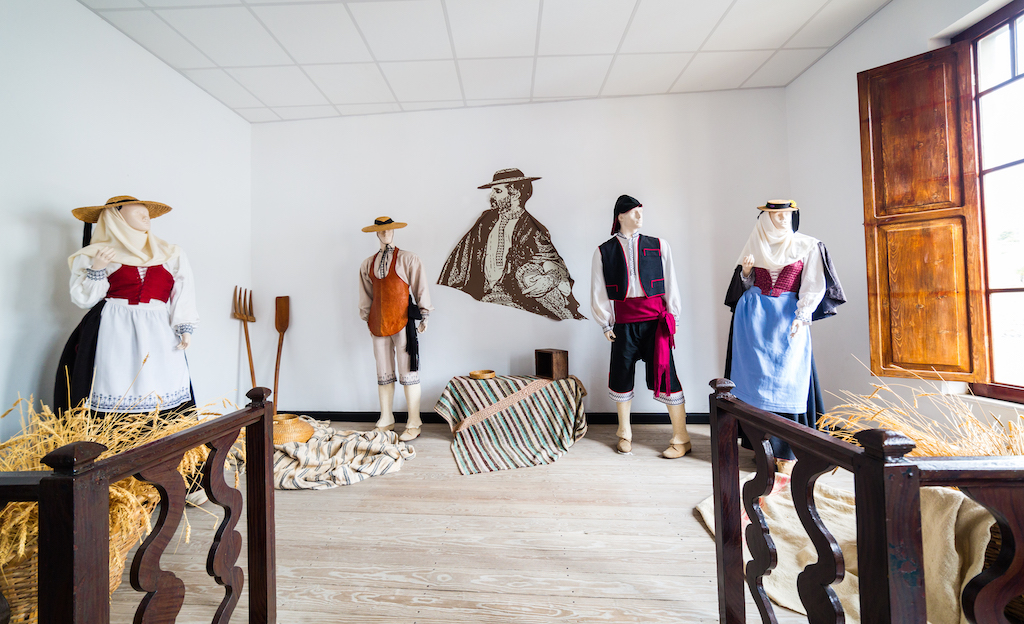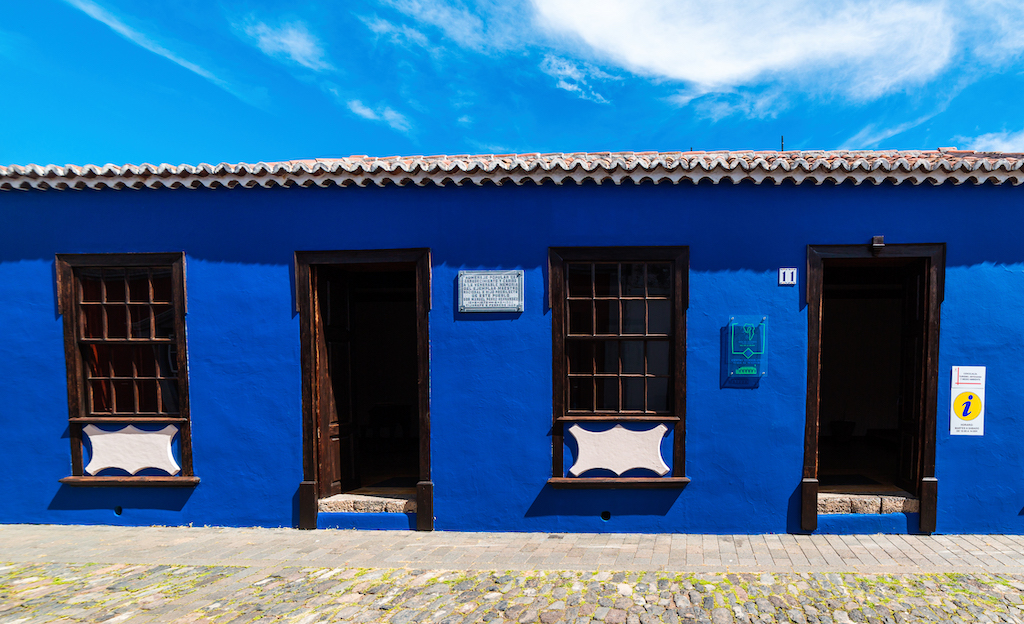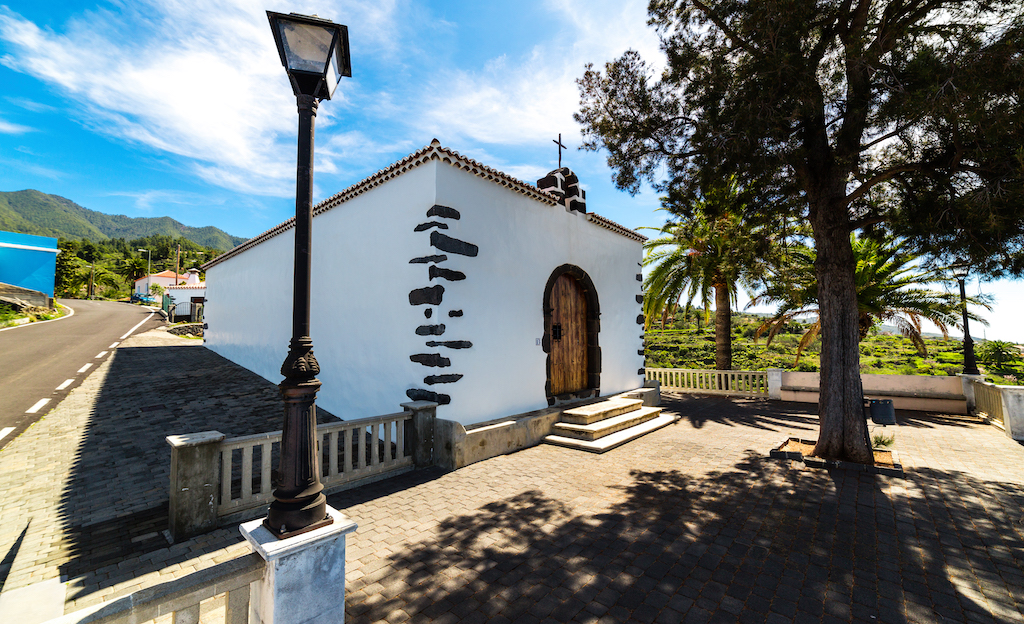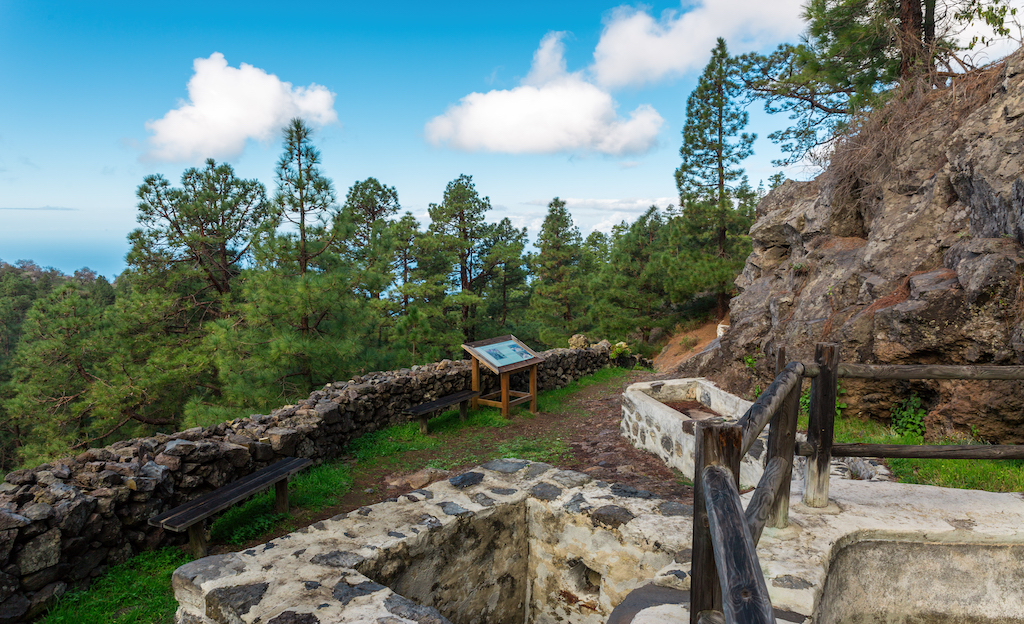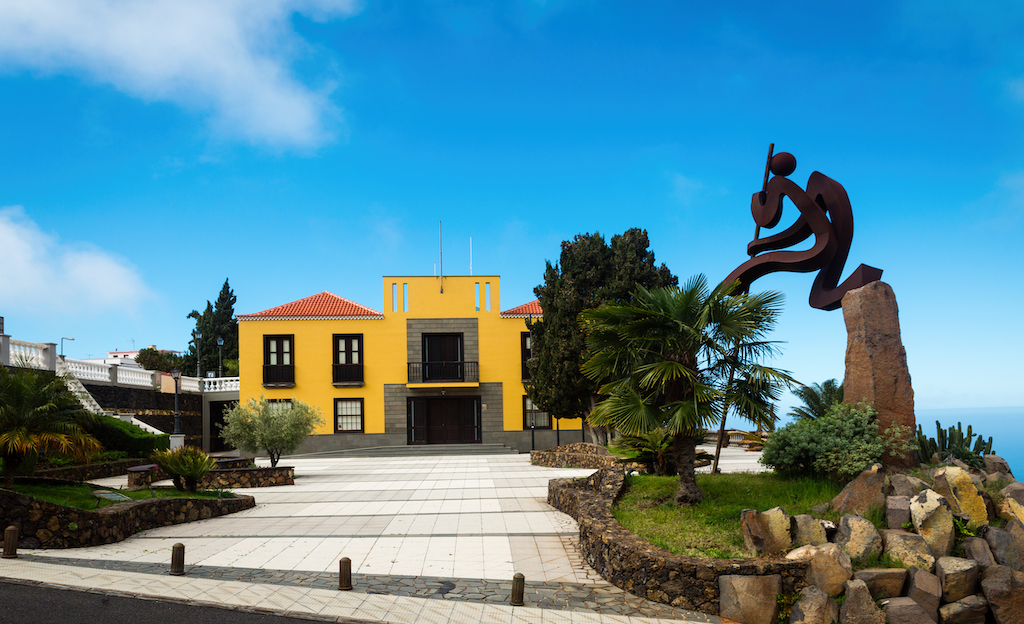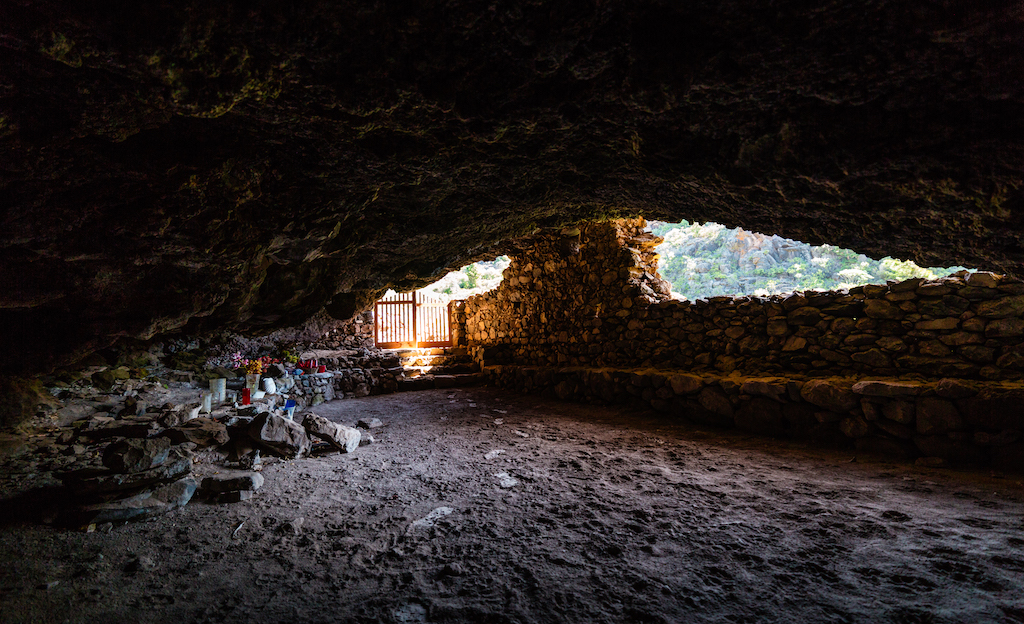The principal feature of the most important religious building of Tijarafe is its steeple, sustaining a double bellfry. It is located at the rear of the church and gives it its distinct silhouette, making it one of the most beloved symbols of the town. Inside, the view of the visitor is led automatically to the impressive altarpiece, designed by Antonio de Orbarán, the most outstanding craftsman of the baroque style on the Canary Islands. The division of the structure in five parts, which from the positioning of the statues look like eleven, makes it unique on the islands. The main sculpture is a Flemish woodcarving from the fourteenth century, whose presence in the church has been documented since 1530. Unsurprisingly, the statue of Nuestra Señora de la Candelaria was declared Bien de Interés Cultural, placing it under the maximum level of protection provided by the Canary legislation.
Virtual Tour:
La personalidad del edificio religioso más importante de Tijarafe viene marcada por su espadaña. La estructura que sostiene su doble campanario está en la parte trasera y fue una de las últimas incorporaciones al edificio, pero convierte a su silueta en inconfundible. Por eso es uno de los símbolos más queridos del municipio. En el interior del templo la mirada se desvía siempre hacia el grandioso retablo diseñado por Antonio de Orbarán, el artesano más reconocido del estilo barroco en Canarias. Por su estructura en cinco calles, que por la disposición de las esculturas parecen once, es único en el Archipiélago. En cuanto a la imagen titular, se trata de una talla del siglo XVI y origen flamenco, cuya presencia en el templo está documentada desde al menos 1530. A estas alturas, y con semejante repertorio artístico, no sorprenderá saber que Nuestra Señora de la Candelaria ha sido declarada Bien de Interés Cultural, el máximo nivel de protección que reconoce la legislación canaria.
